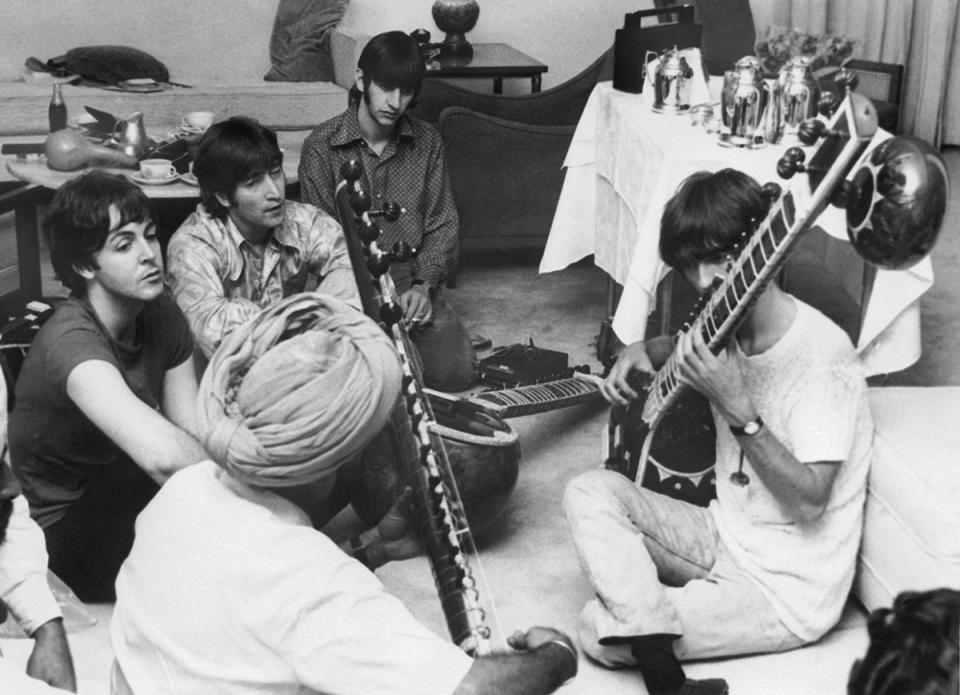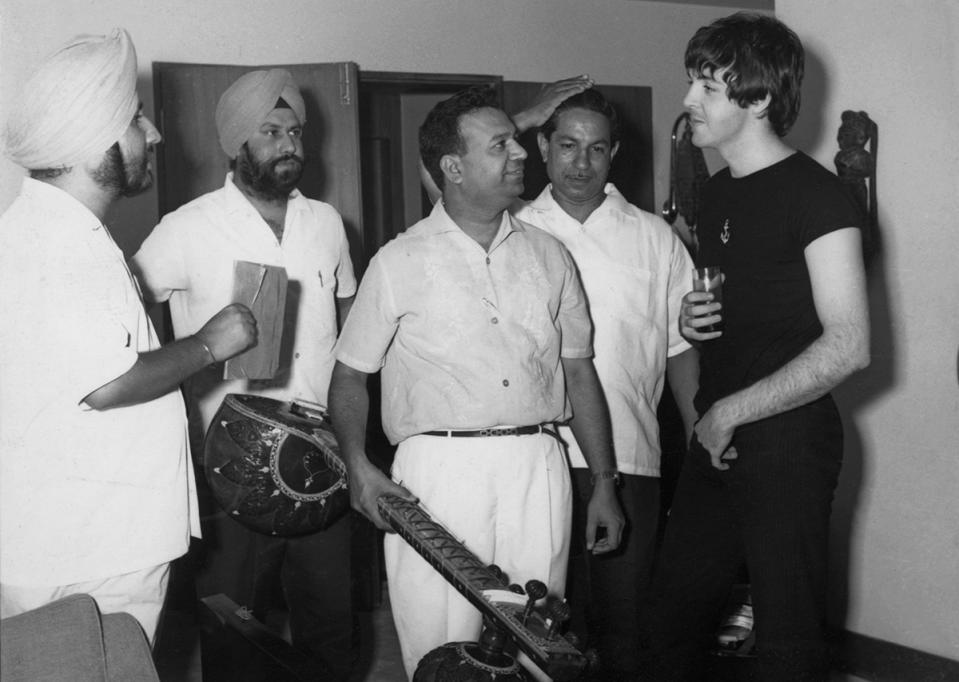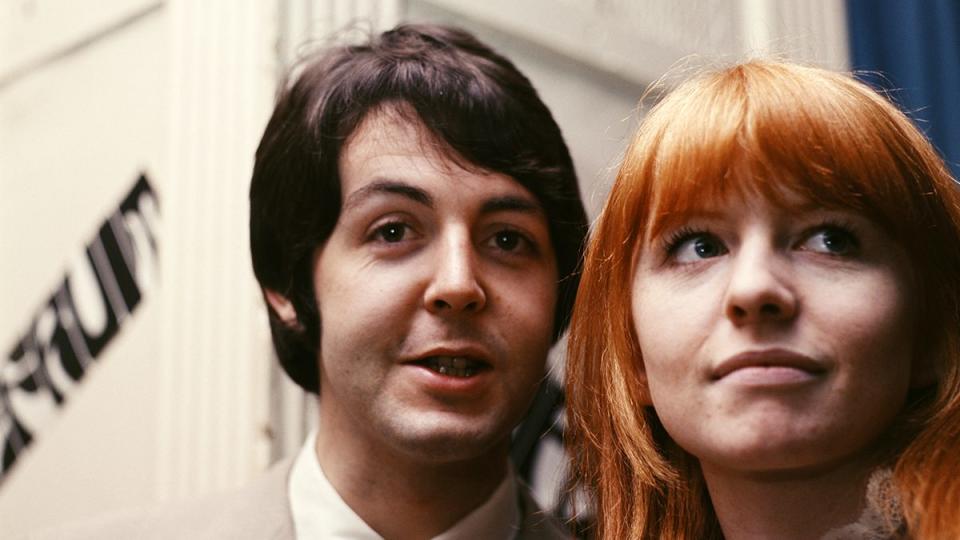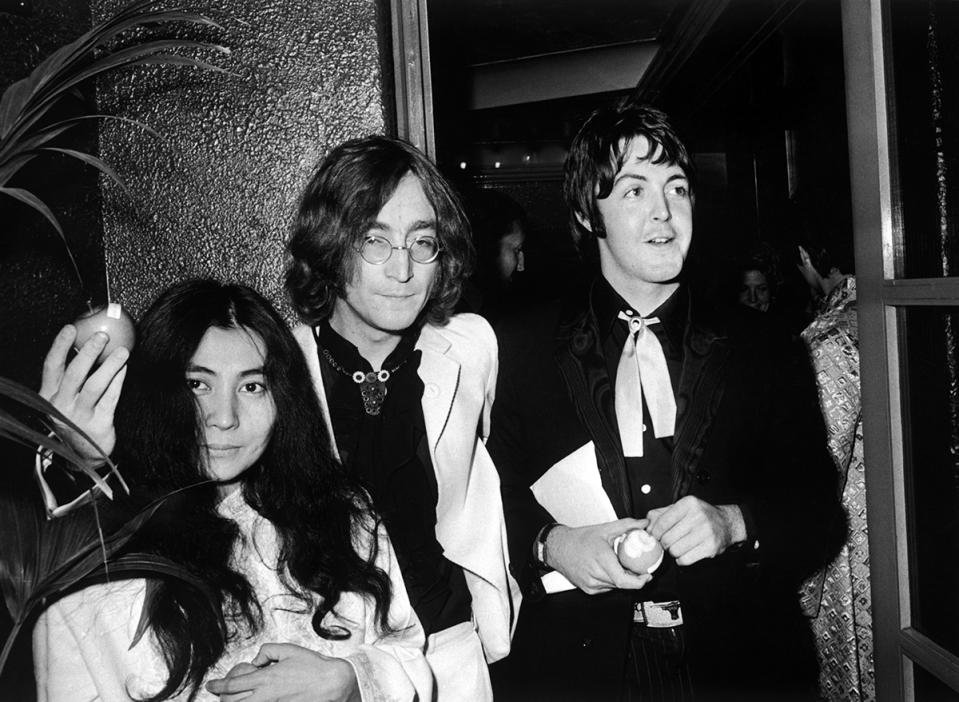The Beatles 'White Album' Songs: Fascinating Secrets Behind All 30 Tracks
From "I Want to Hold Your Hand" to "Now and Then," the music of The Beatles has continued to serve as the soundtrack to our lives, and if you're a fan of the Fab Four, each album will likely represent something different to you. At the same time, one of their most popular is simply titled The Beatles, although it's better known as The Beatles' The White Album , a double-disc released in November 1968 with 30 songs.
The Beatles' White Album songs, and there are a lot of them, go a long way in both showcasing the strength and creativity of the group while at the same time providing proof positive that John Lennon, Paul McCartney, George Harrison and Ringo Starr were going their separate ways musically. Indeed, the band actually broke up less than two years later.
RELATED: The 10 Most Revealing Beatles Songs, Reverse Ranked
The album's origins can be traced back to the fact that in February 1968, The Beatles — along with wives, girlfriends and friends — traveled to Rishikesh in northern India to participate in a Transcendental Meditation training course at the ashram of Maharishi Mahesh Yogi.
Ringo only stayed 10 days, Paul was there until March and John and George stayed there until April. Essentially cut off from the rest of the world, there was plenty of time to write music while they were there — lots of music — and the results were The Beatles' White Album songs, an inside look of which follows.
Secrets and stories behind The Beatles White Album songs
"Back in the U.S.S.R."'
In the 1960s, The Beatles were actually banned in the USSR, so this song became widely bootlegged, turning it into a black market hit. The song serves as a parody of both The Beach Boys (just check out those harmonies) and the Chuck Berry song "Back in the U.S.A." The bit about "Ukraine girls really knock me out" was suggested by Mike Love of the Beach Boys (nice to have friends in high places, isn't it?).
"Dear Prudence"
When The Beatles went to India, actress Mia Farrow and her sister, Prudence, did as well. But because Prudence was so dedicated to the meditation they were being taught, she barely came out of her room and John wrote this song in response. What he eventually discovered was that Prudence was attempting to become "cosmic" and reach God as quickly as she could.
"Glass Onion"
This one, with its touches of psychedelia, could have easily been on Sgt. Pepper or Magical Mystery Tour. John said it was having a bit of fun at the expense of fans who kept reading too much into the band's songs. There was also the line "I told you about Walrus and me, Man. We're as close as can be, man. Well here's another clue for you all, the Walrus was Paul" — his attempt to reassure Paul that all was good between them.
"Ob-La-Di, Ob-La-Da"'
Kind of "McCartney Lite," Paul taking an expression he would often use and turning it into a song. However, his striving for perfection annoyed the hell out of the other Beatles, who got sick of recording it. Ringo would comment that the tension during these sessions gave the impression it would only be a matter of time before the group broke up. Ironic considering how upbeat the song itself is.

"Wild Honey Pie"
Paul referred to this song as a "fragment," something he kind of made up on the spot as an experiment, recording it between work being done on other tracks.
"The Continuing Story of Bungalow Bill"
While The Beatles were in Rishikesh, India, there was also an American there who suddenly departed so that he could go off and hunt tigers, before returning to continue his attempt at enlightenment. Different from most tracks in that it was very informal, including vocals from anyone who was in the studio while they were recording.
"While My Guitar Gently Weeps"
A beautiful song from George, who was unhappy with the musical backing provided to it by the other Beatles. Emboldened by his burgeoning songwriting, he went to friend Eric Clapton to play on it, telling him, despite Clapton's nervousness about intruding on Beatles territory, it was his song, not theirs. Ouch. Additionally, he said the lyrics were inspired by the Eastern concept that whatever happens is all meant to be and there's no such thing as coincidence.
"Happiness is a Warm Gun"
The Beatles excelled at taking song fragments, combining them together and creating magic (other examples being "We Can Work It Out," "A Day in the Life" and the Abbey Road side two medley). The big thing about this song is that on most of the White Album tracks it was individual Beatles off recording on their own, but this track actually got them to play as a group in order to meet the sound John was looking for.
"'Martha My Dear"
Paul can write an ode to pretty much anything, and in this case it was his Old English Sheepdog, Martha. This one was recorded by him and backing musicians, not another Beatle to be found. For the record, he said he adored Martha, and that something about watching the two of them play with each other touched John's heart.
"I'm So Tired"
John literally couldn't sleep and decided to write lyrics about it. No great meaning here, although in the days when you could turn an album backwards on a turn table you would hear a "clue" in the Paul is Dead conspiracy of the time, "Paul is dead man, miss him, miss, miss him.," Hearing that was kind of creepy back in the day.
"Blackbird"
Paul, who recorded solo on this one, says that it was actually inspired by the civil rights movement of the time, the word "blackbird" representative of a woman of the era facing oppression.
"Piggies"
This could be looked upon as a sequel to George's "Taxman" from Revolver in that it serves as an indictment against corporate greed and materialism. He had help with the lyrics from John and his own mother.
"Rocky Raccoon"

Paul loves to write songs about imaginary people, and this little Western romance tale is a perfect example. He refers to it as a one-act play. Reportedly recorded in a single session.
"Don't Pass Me By"
This one represents the first time Ringo had written his own song as part of The Beatles. Begun in 1964, he said it had a "country attitude."
"Why Don't We Do It in the Road?"
Check this out for inspiration: While in India, Paul caught a glimpse of a pair of monkeys fornicating in the street, and amusingly wondered why humans didn't just do the same thing. A little rocker.
"I Will"

Written by Paul, it's a love song that was not necessarily about Jane Asher, who he was dating at the time. As he puts it, when he writes, as far as he's concerned the lyrics and music are part of a film that plays out in his head.
RELATED: 1960s Love Songs: 20 Heartfelt Hits That Will Leave You Totally Smitten
"Julia"
This was the final track recorded for the album, and it's Lennon on his own. The lyrics are a tribute to his mother Julia, who was killed by a drunk driver in 1958 when John was only 17. Even sadder is the fact that she had been out of his life for some time and they were just really reconnecting.
"Birthday"
Paul and John were watching the rock film The Girl Can't Help It and were inspired to write this one, which was done in a single sitting and recorded that night so as not to lose any of its spontaneity.
"Yer Blues"
When John moved into his solo career, his music became much more about his inner feelings and, frequently, his pain. Written in India, 'Yer Blues' was, he said in the 1980 interview with Playboy, published in book form as All We Are Saying, he was "trying to reach God and feeling suicidal. The funny thing about the [Maharishi's] camp was that although it was very beautiful and I was meditating about eight hours a day, I was writing the most miserable songs on Earth. In 'Yer Blues,' when I wrote, 'I'm so lonely, I want to die,' I'm not kidding. That's how I felt."
"Mother Nature's Son"
Also written in India, another song that Paul would work on in the studio by himself without utilizing the other Beatles. Nature, as is well known, has always been an important part of who Paul is, deepened by his connection with first wife Linda who shared his feeling for it.
"Everybody's Got Something to Hide (Except Me and My Monkey)"

John explained that this song was about his relationship with Yoko Ono, and the paranoia that seemed to be coming their way from everyone they interacted with. People, he felt, simply couldn't understand the depth of the love they felt for each other.
"Sexy Sadie"
There was a tendency by John to fall hard for anyone who offered a path towards enlightenment, but he was also quick to shut it all down if he felt there was reason. Someone got in his ear saying that the Maharishi had made a pass at one of the women there and that's all it took for him to emotionally shut down and write this song rejecting him. "Maharishi" became "Sexy Sadie."
"Helter Skelter"
When Paul heard Pete Townsend of The Who talk about the band recording the loudest, most ridiculous rock 'n' roll record anyone had ever heard of, and without even knowing what the song was, he grew determined that The Beatles out-rock it, hence "Helter Skelter." Unfortunately, Charles Manson thought the song had something to do with Armageddon and that it was speaking to him, thus inspiring him to create his murderous "family." In Britain, the phrase "helter skelter" is actually referring to a playground's spiral slide.
"Long, Long Long"
There simply isn't much known about the origins or story behind this one, George himself only offering up a few vague words of description or explanation.
"Revolution 1"
This was the first of the songs The Beatles recorded for the White Album, and in 1970 John shared with Rolling Stone his motivation for it: "I wanted to put out what I felt about revolution. I thought it was time we spoke about it, the same as I thought it was about time we stopped not answering about the Vietnam War when we were on tour ... I had been thinking about it up in the hills in India. I still had this 'God will save us' feeling about it, that it's going to be alright. That's why I did it: I wanted to talk, I wanted to say my piece about revolution." The faster-moving, more rock-oriented version was released as the B-side of the "Hey Jude" single (and is featured in the video above).
"Honey Pie"
Paul's tribute to 1920s music that, of the band, he was the only one that was a fan. John made no secret of the fact that he truly hated it.
"Savoy Truffle"
You just never know where the inspiration for a song will come from, and George has explained that this song, that is literally about chocolate, was written in tribute to the fact that his buddy Eric Clapton has a true sweet tooth, and there are lots of sweets mentioned.

"Cry Baby Cry"
John would later dismiss the song completely, but its lyrics were inspired by a combination of the nursery rhyme "Sing a Song of Siexpence" and a radio commercial proclaiming, "Cry baby cry, make your mother buy."
"Revolution 9"
John and Yoko pulled together this track consisting of spoken word extracts and a collage of sounds, all punctuated by someone saying the words "number nine" repeatedly. Definitely reflecting the avant-garde art world that Yoko was a part of.
"Good Night"
Ringo sings this lullaby that John wrote for his first son, Julian. The only Beatles involved with it are Ringo on vocals, John on acoustic guitar and producer George Martin scoring an orchestral and choral arrangement.
Of all The Beatles songs it was a lovely way for the White Album end, and one of the closing chapters in the history. Though we hear their songs in our minds, hearts every day, so in truth it never truly has ended, has it?
For more about The Beatles, keep reading…
Paul McCartney Says This Simple Eye Exercise Keeps Him From Needing Glasses at Age 81
The Closest I’ve Come to an Addiction Is to The Beatles: Here’s My Story
